
16 Oct ad in the Seattle Times endorses Biden, criticizes Green New Deal
Posted October 16, 2020 from Seattle WA

The ad featured in this blog should be in the Sunday Seattle Times this week (Oct 18, 2020.)
In the ad I endorse Joe Biden (and implicitly Kamala Harris) and thank him for his reluctance to sign on with the Green New Deal. As always, the ad is very short and packed with opinion so this blog is designed to explain my thinking and try to link to at least a few of the sources I have used, in case anyone is interested.
AD:
Thank you Joe Biden—I’m thrilled to be voting for you, as you support our heritage of electoral democracy set in motion by George Washington. When the other candidate is coy about whether he would leave if he loses, I wonder how any American could consider voting for him”
The first 2 sentences are intended to convey irony. Every major party candidate for President In the history of this country with the sole exception of Donald Trump would easily have passed the low bar of “supporting our heritage of electoral democracy.” But that just shows how sad it is that a major party that represents a crucial, needed and beloved political tradition in American politics has stooped so low as to fail this crucial test.
Notice that I don’t credit the other founding fathers with our tradition of electoral democracy. That’s because, though they along with the people helped lay the groundwork for it, they don’t really deserve the actual final credit. George Washington does, albeit with plenty of help from them (the rest of the founding fathers), the people, and the revolutionary tenor of the times.

It was only Washington, however, who was in a position to hijack the revolution, and there were plenty of calls for him to do this. Leaders of young countries do this on a routine basis and it’s my opinion that George Washington does not get enough credit for the myriad things he did not do. He owned the loyalty of the remnant Continental Army and the ability to call it up–witness his quick creation of a force to put down the Whiskey Rebellion. He had plenty of support among the population and the whole thing could have been yet another dreary example of an early national leader declaring himself President for life (which Trump has already implied he wants to do) and using the national treasury to pay off his personal debts and then enrich himself. (Washington was in debt his whole adult life including during and after his Presidency.)
The founding fathers had written down a lot of great words and sentences, but they were just that: ink on parchment, and had Washington had Trump’s ego and selfish ambition, he could easily have run rough-shod over them, just as Trump can and could run roughshod over the Constitution now: he has already unconstitutionally taken the budget allocation job from Congress to build his wall, among many other things.
AD:
But Joe, I also appreciate your reluctance to support ‘Green Deals.’ These deals get the urgency of the issue right, but point us toward ‘cures’ that are already failing us in practice.
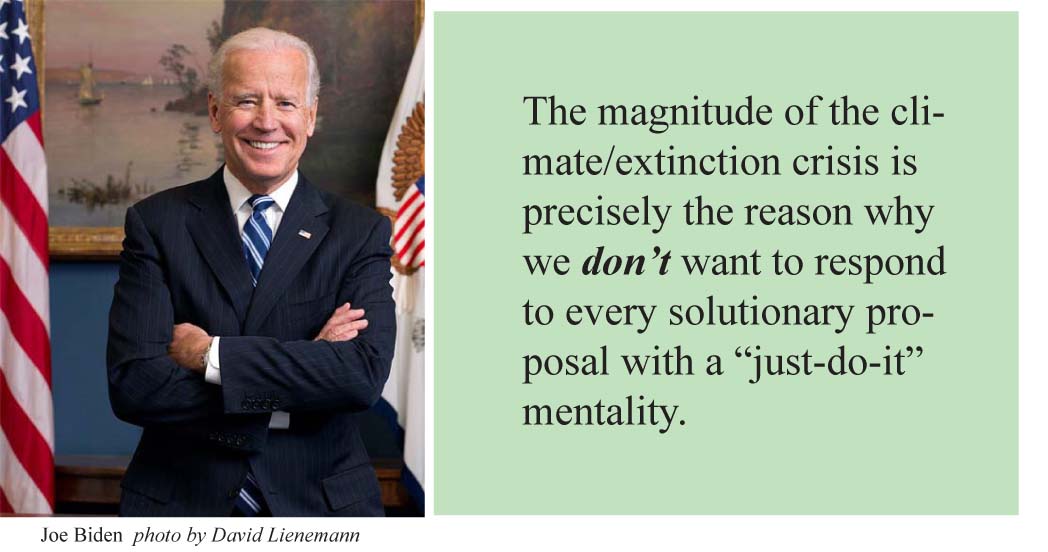
Yes, I am worried that I will come off, in writing this, as not seeing our world’s climate/environmental problems as “big enough” to warrant drastic action, so I tried to address this by saying the GNDs get the “urgency right.” The fact that the problem is huge and life-threatening–vastly bigger and more serious than the virus pandemic for instance–does not imply that we should do the first thing some industry-lobbyists and political-strategists say we should do. If you are a patient with a gangrenous right leg, it is imperative that you not go to a surgeon who will cut off your left leg. The urge to “just do it,” as one corporation dementedly keeps imploring us, is extremely dangerous.
AD:
In particular anything we do to help the biofuel/biomass industry is far worse than doing nothing at all.
The fact that biomass and biofuels are included anywhere in the list of clean or sustainable sources of energy in early drafts and descriptions of the Green New Deal is very troubling. It all stems from a mental error made originally by the large Environmental organizations who by and large decided to endorse ethanol back in the mid 2000-oughts when a consortium of agricultural corporations created a masterful campaign to have this hoax turned into federal law. At the time, many people did not understand what ethanol and ag-biodiesel would look like in practice. (Archer Daniels Midlands had no such lack of insight.) The insanely voracious land-requirements for ethanol were to alter land and commodity prices from that point on and the world over. The verdant prairies of eastern North Dakota were bulldozed immediately and the Dead Zone in the Gulf of Mexico made its appearance. Tim Searchinger was among the first scientists to blow the whistle on ethanol. As Glen Grunwald wrote in Politico Magazine, “Tim Searchinger, a Princeton research scholar whose biofuels analyses have been published in journals like Science and Nature, says the basic problem is that land is very good at growing corn and storing carbon, but very inefficient at producing energy; solar cells can produce 100 times as much energy from the same acreage as corn ethanol. This is why Al Gore, who supported ethanol as a politician, now calls it “a mistake.” The problem with ethanol is after you use so much land growing ethanol, we still need food. Agriculture is pushed into the prairies such as Eastern North Dakota, mostly lost since ethanol, and the tropical rain forest, which is being destroyed for biofuels as we speak. The overall effect of losing these carbon sinks more than offsets any gains from the yearly regeneration of the crop, and ethanol ends up being, somewhat shockingly, worse to burn in your gas tank than regular gasoline. As Environmental Working Group energy specialist Scott Faber says, “You can’t be for the status quo with ethanol and also be for saving the planet.”
But the revisions weren’t noticed by everyone. Though the major environmental organizations mostly issued quiet statements rewriting their position on ethanol (although most continued in the delusion that next-generation “cellulosic” or “algae-based’ biofuel shell-game strategies) there was basically zero-hoopla surrounding this change. Journalists by and large went on their merry way, seemingly regurgitating every press release from the biofuel industry that came their way. (Witness the unquestioning, positive treatment Alaska Airlines receives when it’s biofuel program makes the news) In general Ethanol has become the subject no one talks about in America, unless it becomes a factor in our partisan divide: In Iowa currently the Dem Senate candidate, ironically, has the Republican on the defensive for not supporting ethanol enough.
“Biomass” is biofuel’s evil twin. It’s a Madison-Avenue name for what we used to call “burning wood.” The very notion that burning wood could be a solution to our climate problems should put people on alert: We might ask, Wow! Why did no one ever think of burning wood before? But please, can we look at the science? Mary S Booth has written a withering denunciation of biomass in the New York Review of Books that explains the scientific errors that were corruptly or dimwittedly made to sneak “biomass” into the hallowed hall of “sustainable” energy sources.
- Here is the link to The Great Biomass Boondoggle by Mary S. Booth. Because I feel this is a crucially important work, I have also pasted this essay into the Appendix of this blog.
But their is magic in Biofuel. While biofuels like ethanol and biodiesel, (favored in Europe) as well as biomass are worse for the planet and the climate than simply burning gasoline, they are wondrously helpful in getting politicians elected. They allow “environmentalists” to seek common ground with farmers, something all types of environmentalists always sorely wish for. They allow politicians to say they are helping farmers, which is very true but on one level is also very ironic—we love farmers only partly because they are salt-of-the-earth people. The rest of that strong love-bond stems from the fact that we get hungry every five hours and they are the ones that grow the food we eat by and large. But with ethanol, farmers aren’t putting food on our table, they are, in a market sense, taking food off the table. Ethanol uses an astounding 40% of our vast corn crop, taking about 40 million acres of America’s rich cropland to grow only 5 to 7 percent of the fuel we put in our cars and trucks. Thus it exerts an upward pressure not only on the land needed to be taken from Nature for agriculture, but also an upward pressure on food prices. Small changes in the price of basic grains can be devastating to the poor in places like Egypt and even India, where families regularly teeter on the brink of hunger and starvation—oh wait, the list of places with families like that now includes America.
(Biofuel-promoting websites dismiss the idea that ethanol raises food prices, but to back this up they usually point to secular trends, saying things like: “Corn prices went up initially with the RFS (Renewable Fuel Standard, the name of the key legislative requirement to include ethanol in gasoline) but have since dropped to pre-ethanol levels,” or words that more slickly present this type of argument. Clearly, these writers have never taken economics or have conveniently forgotten it. If the supply of land for food is reduced, the price will always be pushed up—but whether the resultant corn price is higher or lower than the status quo ante depends on many varied factors. The reality remains that whatever the corn price is with ethanol, it would be lower without it, assuming everything else remains unchanged.)
Here is a link to another report, from 2019, from the National Wildlife Federaton,
“Ethanol driving Harm…”
AD:
And while clean energy targets sound effective, in reality they often collide with the irrational way we incentivize electric utilities and don’t lead to real change.
There are lots of signs that the methods favored by Green New Deal conceptualizers are going to be similar to those endorsed by the majority of climate activists so far in most legislative venues. This means we will see legislation that is all about setting targets for climate gas reduction in the future and asking governments and particularly utilities to meet them. This doesn’t work.
If we set a target with a goal of 30% of our electricity to be sourced from renewable production, the utilities will be glad to enter into a deal to do this. They will embark upon large capital projects to create sustainable energy production, but they won’t care how efficient it will be because utilities in America are not rewarded for producing energy at the lowest cost, they are rewarded–perversely– for the size of their capital outlays. An inefficient project may well seem more attractive to them than an efficient one, since they are allowed charge their captive customer base rates that will set the return on capital invested at about 11%. Meanwhile, this approach will do nothing to dissuade a consumer from using fossil-fuel produced energy, as the price signal for electricity will remain basically unchanged.
Suppose we set a goal of 50% of our energy to come from renewables by 2030 and miraculously we meet that goal. It won’t mean we’ve reduced greenhouse-gas pollution. Since the climate crisis began, at least three brand new uses for cheap energy have emerged: crypto-currencies, indoor Marajuana grow-operations and the plain old cost of the internet. 5G will be the next big suck. It’s quite possible that 50% of the 2030 demand for energy will represent more climate pollution than 100% of the 2020 demand.
A recent article in National Review by Travis Kavulla makes a similar point to mine. Let me quote him at length:
“More even than the health-care industry, the energy marketplace consists mostly of local monopolies and other very large companies. They await any policy proposal, not scared of the prospect of new programs and regulations so much as they are eager to co-opt them. Utilities in particular fit this mold. They have captive customers, so they have no great reason to worry about the price effect of government policies. Indeed, many of the most lucrative utilities have seen mini–Green New Deals emerge in states where they operate. The play is at this point quite common. A green coalition emerges demanding more clean energy and less coal- and natural-gas-fired electricity generation. Politicians endorse it. The bumper-sticker message — e.g., “80 percent renewables by 2040” — polls well enough that the utilities think it will pass. And then the utilities swing into action. They bargain with environmentalist groups to present a legislative package to retire fossil-fuel assets and embark on a renewables spending bonanza, usually financed by surcharges on customer bills. This core bargain then becomes a platform for all comers to insert their asks: labor unions, electric-vehicle advocates, technology-development firms looking for a carve-out, and local governments that want investments earmarked to them. The price tag grows, and all of the costs end up flowing through the rates that government regulators permit utilities to charge their customers.
To give but one example of the phenomenon: Last year the Virginia assembly passed a law that included a carve-out for offshore wind development. The eventual no-bid project, to be owned by the monopoly Dominion Energy, clocked in at $300 million for twelve megawatts. An onshore project of the same size would cost one-quarter of that price or less. But when you multiply Dominion’s shareholder investment by the standard 9.4 percent return that Virginia’s regulators have authorized for it, you see that it pays to spend more on less efficient projects.”
(Liberals who go to the Kavulla link: “What’s the Green New Deal” will wince at the insulting way New Dealers are portrayed. These are people who are trying to save the Earth. But it’s worth reading to the end. Kavulla, despite writing in the National Review, makes the supremely left-wing point that the original New Deal, that’s FDR’s version, was responsible for stealing public water from all over the West and handing it to big corporations.)
So what do I think should be done?
Were there a will, there is definitely a way. A revenue-neutral plan that did not grow the public-sector and did return the carbon-tax money money that was collected back to the public. But given electoral failures of this approach in the recent past, this may seem like pie-in-the-sky to green activists.
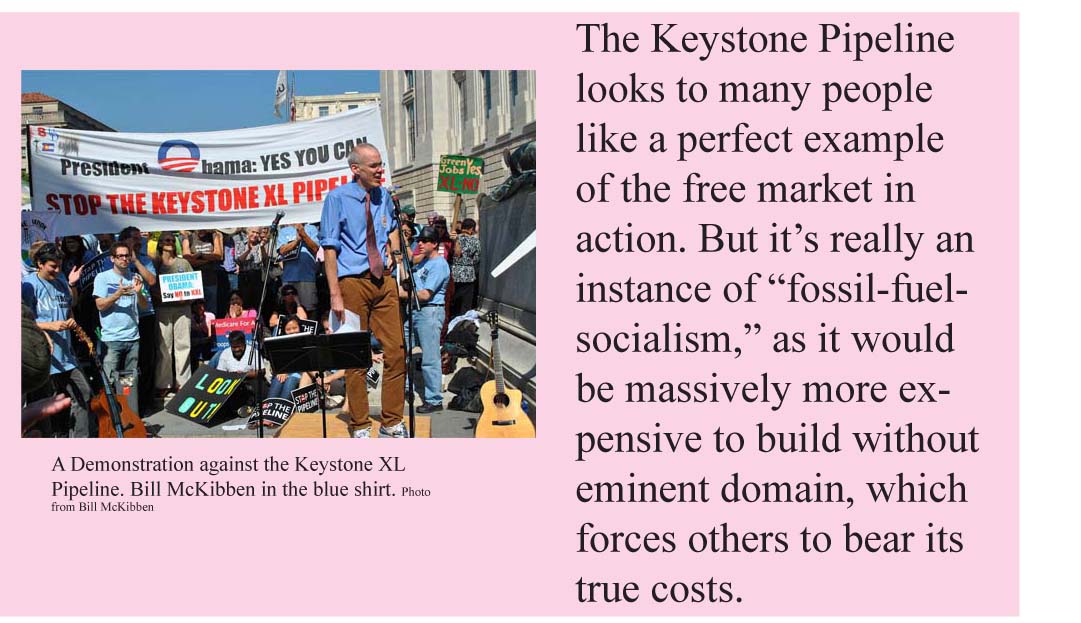
It gets into the weeds really fast, but there are also massive subsidies for fossil fuel companies written into the tax code. I personally do not know or understand these exactly and am not the person who should be writiing this paragraph, but all these gifts could be jettisoned if we had the real urgency this crisis should be engendering. The fact that we are subsidizing our own demise should make everyone shudder.
Another really theoretically beautiful way to slow climate change, because it is fully market-friendly approach, is f to begin to levy fees and taxes on fossil fuel that is transhipped across jurisdictions. If I want to mail a package with flammable liquid at the Post Office, I will be sent away forthwith. But if I am an oil-shipment company I can send highly flammable bitumen through Seattle, right by the Mariners stadium, in long strings of rail cars. I will be charged $10 a ton by the State of Washington. If this fee were to be raised commensurate with the external costs imposed on society by the material being shipped it would create the type of feedback loop that would allow capitalistic forces to shut down climate pollution without any especial pain being inflicted on the economy. It would be the beginning of the creation of a VIRTUOUS CIRCLE.
Virtuous Circles would work this way. Let’s say Climate change causes more fires to burn, which causes governments to need more money to help victims, organize controlled burns, and help owners fire-proof buildings. Government then proposes to raise taxes to pay for these new programs.
1 A Virtuous Circle is created if the tax is on climate pollution.
2. A Vicious Cycle or Non-Circle is created if the extra money is raised from other sources such as sales tax, property tax or general business taxation.
Florida is already starting to go under water. The private insurers have long ago pulled out of coastal Florida, which is an example of the Market recognizing the truth of climate change, btw. Sadly, the government of Florida has stepped in (and is creating a vicious cycle) by insuring buildings including new construction in coastal Florida courtesy of the Florida state taxpayers and not through any thing close to a carbon tax. As soon as this irresponsible move by Florida collides with further sea-level rise and bigger hurricanes, the plight of Florida home and business owners will soon be brought to the national taxpayers who will then be tapped to make everyone whole, probably with new deficit spending. It won’t be a pretty picture.
Florida was an example, fires were an example, rail-shipping of oil-cars are all examples of it not happening. But if we create virtuous circles, and refuse to Repair the damage of climate change with non-carbon-tax revenue, we can create VIRTUOUS CIRCLES that allow market forces to work for all of us to slow down or stop this scourge to our planet. However, I see no hope of this happening. Liberals would need to nurture their inner fiscal conservative where non-carbon-taxation and deficit spending is involved; conservatives would have to jettison their climate-blinders. A revising of hardened-partisan-political-positions in America? I must be dreaming.
Thanks all,
Comments are welcome. I would love to open up a comment section, but the internet is what it is, full of mean people and bots and opportunists along with you and the other wonderful people.
So all I can do is leave my email, ednewbold1@yahoo.com
.I would love to hear from you.
Thanks,
Ed Newbold Wildlife Artist
NO Payroll Protection Program money has been received by Ed Newbold Wildlife Artist and none has been used in the purchase of Seattle Times advertising.
Appendix
The Great Biomass Boondoggle
by Mary S. Booth
published as a letter to the New York Review of Books, October 14, 2019.
Mary S. Booth (this is a link)
The urgency of the climate crisis is inspiring some extreme and unproven ideas for how to hide carbon and cool the planet, such as ocean fertilization, turning CO2 into rocks, and seeding the atmosphere to dim the sun. Arguably one of the most reckless ideas, though, is already well underway: burning “forest biomass”—that is, trees—in power plants as a replacement for coal. The problem with this so-called green energy source is that instead of decreasing greenhouse gas emissions, it increases the amount of CO2 coming out of the smokestack compared to fossil fuels, and the climate “benefit” is claimed by simply not counting the emissions.
While policymakers in developed countries (the European Union, the United States, Canada, Japan, and Korea, among others) seem perfectly happy with this solution, scientists and activists are reacting with bewilderment and fury as entire forests are vaporized into the atmosphere in the name of renewable energy. Meanwhile, the burgeoning biomass and wood-pellet industries are dancing away with billions in renewable energy subsidies. To counter this atrocious trend, I founded an organization in 2010, the Partnership for Policy Integrity, to provide reliable science and policymaking clarity on the forest and climate impacts of burning forests for fuel. Since then, many environmental groups have joined the fight, but we still haven’t ended this parade of stupidity, because the forces are powerful and the pool of money is deep.
Like many damaging forms of economic activity, the biomass industry started out small and at first flew under the radar. For decades, sawmills and pulp and paper manufacturers have burned sawdust, wood scraps, and black liquor (the condensed chemical slurry left over from wood pulping) to produce heat and power. Environmental groups were content to call this green energy considering that the alternative had been incineration or dumping black liquor into streams. And since these other outcomes would generate CO2 anyway, burning such materials was considered to provide carbon-neutral energy. Few people questioned why even the filthiest, most polluting biomass boilers at paper mills—some producing sulfur dioxide emissions to rival those of coal plants—were getting renewable energy subsidies, and over time these subsidies (along with federal renewable energy tax credits) became an important source of revenue for wood-consuming industries.
As more US states enacted renewable energy mandates, however, developers and speculators cashed in on subsidies by building more standalone wood-burning power plants designed solely to put power on the grid. The trend appears to have peaked in the US in 2010 with the post-financial crash stimulus program, which issued cash grants for renewable energy production, including biomass power. Burning wood to produce electricity is expensive, and many plants are not competitive even with supplemental green energy payments. As a result, in the United States the biomass industry has slowed in recent years, although the continued treatment of bioenergy as renewable means it might receive another boost though programs like a Green New Deal.
In the EU, however, where subsidies and incentives have been more consistent and lucrative, wood consumption for energy has careened upward, more than doubling between 2000 and 2017. Eurostat data on renewable energy and forestry reveal that wood comprises about 35 percent of total renewable energy inputs in the EU, though actual delivered heat and electricity are lower because the technologies for converting inherent energy to useful energy are extremely inefficient. Fuelwood now comprises about a quarter of all forest harvesting in the EU, and total consumption of wood for energy has risen to over 400 million tons a year. A small but increasing portion of this tonnage is in the form of wood pellets, which burn hotter than green wood chips and are easier to ship and handle, making them an effective substitute for coal and residential heating fuels.
Much of the EU’s forest industry operates under strictures, with the result that, as demand for “energy wood” increased, so has harvesting in less regulated forests, especially in the southern US and Canada. There, the wood-pellet industry has grown exponentially, but it has also expanded in the less scrutinized corners of Europe, such as the boreal bog forests of Estonia and the ancient forests of the Carpathian Mountains in Slovakia, Ukraine, and Romania, home to the lynx, bears, and wolves of old European folktales.
Wood pellets are still just a fraction of the total wood burned for energy in the EU, yet, even so, the industry’s impacts have been horrendous. The wood-pellet industry has become particularly controversial in the American South, where a company named Enviva, the largest wood-pellet producer in the world, set up shop and quickly got to work liquidating forests. The South is known as the US’s “wood basket,” thanks to its endless rows of plantation pine, but the wood-pellet industry has also targeted natural forests, including some of the most carbon-rich, biodiverse wetland forest ecosystems of the eastern United States.
Enviva’s pellet plant, Ahoskie, North Carolina, 2017
Hardwoods are a preferred pellet feedstock because the processing, grinding, cooking, extruding, and cooling of wood pellets made from pine emit large quantities of volatile organic compounds (VOCs), a class of federally regulated pollutants. Enviva did not want to pay for the installation of VOC pollution-control technology at some of its plants, so officials in the state of Virginia who issue air permits instead required the company to use a minimum amount of hardwood feedstock in order to reduce VOC emissions. Soot emissions have also emerged as a chronic problem at wood-pellet production plants in the US South.
Clearcutting is never pretty, but there is something especially sickening about seeing a forest annihilated for supposedly green energy. The wood-pellet industry’s excesses—including its misleading claims that it uses only “forestry residues,” commonly understood to be the tops and limbs of trees that have otherwise been harvested for lumber—are exposed in a half-hour documentary, Burned: Are Trees the New Coal?, made by Lisa Merton and Alan Dater of Marlboro Productions, and now streaming for free at Link TV (full disclosure: I gave technical advice to the filmmakers and appear in the film). The film features the intrepid staff of a North Carolina environmental group, Dogwood Alliance, as they wade chest-deep though snake-infested wetlands to reach forest clearcuts and then follow trucks loaded with logs back to the pellet plant.
Anna Gowthorpe/PA Images via Getty Images
Drax Power Station, which has converted four of its six boilers from coal to biomass fuel, Selby, England, 2013
The film then follows the pellets as they are shipped overseas and burned for electricity, including at Drax, a 4,000 MW power plant in the UK that has converted four of its six boilers to burn wood pellets instead of coal, and currently provides around 7 percent of the UK’s electricity. The scale of this operation is astounding, with a year’s worth of pellets consumed by Drax representing wood mass approximately equivalent to clearcutting a forested square extending to eighteen miles on each side.
Not content with the existing supply of pellets from Enviva and other companies, Drax has built its own pellet plants in the US. The paradox of Drax’s investment in such “vertical integration” is that it will likely make the company more vulnerable when the bioenergy scam inevitably fails. In the meantime, though, Drax receives renewable energy subsidies funded by the British public to the tune of about a billion dollars a year, or $2.78 million per day, as of 2017.
Clearcut harvesting of wetland forest for biomass pellet production, North Carolina, 2016
While wood pellets from North American forests feed Europe’s large biopower plants, much of the biomass harvested within the EU ends up as green wood chips that fuel thousands of smaller heat and power plants, and as pellets that are sold for residential and commercial heating. Traditional firewood harvesting also still constitutes a large share of this domestic use. Wood fuels are shipped all over the EU, and the fragmented nature of the industry, with tens of thousands of suppliers, means that there is little transparency in the supply chain and an increasing risk of wood coming from forests that are supposed to be protected.
Illegal logging happens for all kinds of reasons, but the demand for energy wood is an increasing driver, as previously “low-value” wood can be monetized. Working with the Environmental Investigation Agency, the Romanian nonprofit Agent Green has exposed, sometimes at great personal risk, how wood logged out of the primeval forests of the Carpathians ends up as firewood or bagged wood pellets sold at Austrian hardware stores as a source of “green” heat. Analysis of satellite imagery reveals tree cover decimated throughout the Carpathians—and indeed, the same liquidation of forests is happening in Estonia, Latvia, the southern US, and British Columbia in Canada. These are all places where the wood-pellet and biomass industries have taken hold and are adding to existing pressures on forests.
*
How, then, did trees from southeastern US wetlands and ancient European forests come to be classified as a zero-carbon renewable energy source—not just in the EU, but also in Japan and Korea? For these countries, too, are increasingly importing wood pellets from more forested nations as they phase out coal. The rationalizations involved in this scheme induce moral and intellectual whiplash, because they seem to shift constantly, and ultimately, to make no sense.
Countries all over the world report their greenhouse gas emissions annually to the United Nations. International carbon-accounting rules require carbon loss from forest harvesting to be reported in the “land sector.” The first problem is that harvested forest wood is not reported as an emission, even if it is burned for energy, but simply shows up as a reduction in that country’s reported forest carbon uptake year to year. However, since the lost forest carbon has ostensibly already been noted in the land sector, energy sector emissions of CO2 from burning the resulting biomass are counted as zero, to avoid counting the carbon loss twice.
Although it inevitably undercounts forest-harvesting impacts, this system by and large works as a way of characterizing gross fluxes of forest carbon at the national level. The problem is that in justifying subsidies for renewable energy, policymakers and forest industry representatives (who may sometimes be the same people) have reified the concept of bioenergy as counting as zero when burned, to bioenergy actually having emissions of zero globally. This means that when it comes to financial support, bioenergy is usually treated as equivalent to zero-emissions technologies such as wind and solar as a way of mitigating climate-warming.
Wood-burning power plants in fact emit more CO2 per megawatt-hour than even coal plants. In order to reconcile this physical reality with the billions provided in subsidies intended to reduce emissions, the biomass industry has come up with more and more outlandish explanations for why burning trees should be considered automatically carbon-free.
When annual crops are used to make liquid biofuels like corn ethanol, the biomass portion of the fuel’s net emissions is considered carbon-neutral because yearly crop regrowth and carbon uptake are assumed to offset the CO2 emitted by fuel combustion the year before. Clearly, this argument does not work for forest biomass, because trees take decades to regrow. Deprived of the regrowth argument, the biomass industry claimed for years to utilize only mill waste and forest residues from sawtimber harvesting (wood that, it was claimed, “would decompose anyway”), even when the industry was deliberately cutting forests for fuel. For far too long, policymakers accepted similar claims from the wood-pellet industry, even as environmental groups on the ground documented widespread clearcutting and the use of large-diameter timber as pellet feedstock.
Lost in this argument, though, was the important fact that even if the biomass and pellet industry were only using forestry residues, burning those residues emits CO2 instantly, while the same wood left to decompose emits it over years, if not decades. Thus, far from being zero-carbon, the cumulative net emissions from burning forestry residues for fuel still speeds the transfer of forest carbon into the atmosphere, and the accumulated net impact of such emissions likewise speeds warming.
When the pellet industry ran out of road for its false claims about residues, it came up with a new rationale to justify biomass as instantly carbon-neutral: as long as forests are growing more wood than is being cut, and are thus harvested “sustainably,” burning any of that wood has zero net emissions. This sophistry gained a surprising amount of traction with policymakers considering it essentially postulated that the carbon just disappears, thus violating a basic physical principle of the conservation of mass.
By this logic, even as the biomass industry levels more forest, it must claim offsetting carbon uptake in an ever-increasing area of forests elsewhere to neutralize those emissions. But this notion quickly bumps up against the reality that the amount of carbon locked up in forests is decreasing globally; there is no epic and immediate regrowth on this planet that is compensating for all the supposedly sustainable harvesting. (The correct accounting approach, in fact, recognizes that forest carbon uptake is already counted as offsetting a portion of existing fossil-fuel emissions; the biomass industry’s claim seeks to double-count that benefit.)
Protesters against a biomass-fueled power station, including activists who are currently suing the EU over its latest renewable energy directive, Gardanne, France, February 5, 2017
The concept of carbon neutrality is so central to the biomass industry that if it were overturned, the entire rationale for the industry would virtually disappear. Companies know this, which is why they continually make misleading statements such as Enviva’s claim that burning its pellets “reduces” greenhouse gas emissions compared to burning fossil fuels. The company does not reveal that this claim relies on reporting only fossil-fuel CO2 emissions from manufacturing and transporting pellets, and on simply not counting the CO2 coming out of the smokestack when the pellets are burned.
Since publicly traded companies like Enviva have a duty to disclose information that is material to shareholders’ interests—and a corresponding duty not to make false statements—my group filed a complaint with the Securities and Exchange Commission against the company in 2016 over its misleading claims about emissions. On the recommendation of the SEC’s secretary, we also petitioned the SEC for a rule-making that would require all publicly traded bioenergy companies to disclose their real emission impacts. We still await action from the SEC, even as billions more dollars flow into “green” bioenergy investments.
It’s not just the companies that want to ignore emissions. Pro-bioenergy legislators in both the US and the EU also regularly mislead the public on the impacts of the industry. In the US, Maine Senators Susan Collins and Angus King, both strong biomass boosters, shoehorned a rider into a congressional appropriations bill, enacted in 2018, that forces the EPA to treat forest biomass as carbon-neutral—despite the recent findings of a multiyear EPA task force, which concluded that burning wood can have significant net emissions. (One of the more darkly humorous moments in Burned is watching Senator Collins spout, almost verbatim, talking-points scripted by biomass industry lobbyists in a floor speech on bioenergy.)
The US senators and their industry allies hoped to build markets for biomass by replacing coal. Unfortunately for them, not even the Trump EPA was up to the deception required to claim that burning biomass reduces emissions. Despite the legislative order to treat biomass as carbon-neutral, the EPA’s final “Affordable Clean Energy” rule concluded that burning biomass emits more CO2 than fossil fuels, and that co-firing biomass with coal degrades a power plant’s efficiency. So much for the “trees are growing somewhere” theory.
In the EU, though, pro-bioenergy legislators have been more adept. The EU sets the rules for renewable energy implementation and subsidies in member states, revising its Renewable Energy Directive every ten years. Horrified by the accelerating forest carnage under the current directive, the nonprofit and scientific communities lobbied hard at the EU for constraints on the use of forest wood as a renewable fuel in the 2018 RED that sets policy for 2021–2030. The EU’s own team of advisers, the European Academies Science Advisory Council, warned the EU’s president, Jean-Claude Juncker, in January 2018 that:
The legal mandate to record forest biomass-fired energy as contributing to the EU’s renewable energy targets has had the perverse effect of creating a demand for trees to be felled in Europe or elsewhere in order to burn them for energy, thus releasing the carbon into the atmosphere which would otherwise stay locked up in the forest, and simultaneously drastically reducing the carbon sink strength of the forest ecosystems… [T]he current use of imported pelleted forest biomass was leading to increased greenhouse gas emissions with no guarantee of when (or even if) the additional carbon released to the atmosphere would be offset by forest regrowth.
Rather than conclude that the biomass subsidy program is based on a fraud, the EU policymakers’ response was to devise a Potemkin set of “sustainability” criteria for biomass that will do almost nothing to protect forests and the climate. The revised directive claims that the new constraints will “continue to ensure high greenhouse gas emissions savings compared to fossil fuel alternatives” and “avoid unintended sustainability impacts”—as misleading a statement as I have ever seen in public policy.
Since all the usual tactics of the nonprofit community had failed, including documentary photos, briefings, and scientific evidence, we felt we had no choice but to sue the EU (with the European Parliament and Council as defendants) over the new rules. My organization thus coordinated a March 2019 lawsuit that challenges inclusion of forest biomass in the new renewable energy directive. We worked with plaintiffs from the EU and the US who demonstrated in their testimony how the biomass industry is causing direct harm to their health and livelihoods, and we are now waiting to hear whether the EU court will accept the case.
Climate science shows that to avoid the most catastrophic warming impacts, the world must cut its carbon emissions in half in the next few years, and be carbon-neutral, balancing emissions with carbon uptake, by 2050. There is no way to achieve this without a vast restoration and expansion of the world’s forests. Provided these forests are natural and not monoculture plantations, this initiative could also help to address another great environmental crisis we face, the extirpation of so many of the world’s species. Many member states have signed on to the EU goal of carbon neutrality by 2050, but a great deal must change: right now, EU member states allocate billions in renewable energy subsidies to promote wood-burning, but little to forest restoration.
A new law enacted in Slovakia is a brave start, given the typical bullying from the forest industry. After forest activists at WOLF Forest Protection Movement (the lead plaintiff in the biomass lawsuit) demonstrated damage to forests from biomass harvesting, the government last year restricted bioenergy subsidies to mill residues and energy crops, eliminating subsidies for forest wood. On this side of the Atlantic, similar rules in Massachusetts took low-efficiency wood-burning power plants off the renewable energy menu in 2012—although the state’s current Republican governor seems intent on overturning those forest protections. It really is this simple: to mitigate climate change, we need to grow more trees, not burn them for energy. Policymakers need to wake up, because we’re running out of time.
October 14, 2019, 7:00 am
Posted October 16, 2020 from Seattle WA

The ad featured in this blog should be in the Sunday Seattle Times this week (Oct 18, 2020.)
In the ad I endorse Joe Biden (and implicitly Kamala Harris) and thank him for his reluctance to sign on with the Green New Deal. As always, the ad is very short and packed with opinion so this blog is designed to explain my thinking and try to link to at least a few of the sources I have used, in case anyone is interested.
AD:
Thank you Joe Biden—I’m thrilled to be voting for you, as you support our heritage of electoral democracy set in motion by George Washington. When the other candidate is coy about whether he would leave if he loses, I wonder how any American could consider voting for him”
The first 2 sentences are intended to convey irony. Every major party candidate for President In the history of this country with the sole exception of Donald Trump would easily have passed the low bar of “supporting our heritage of electoral democracy.” But that just shows how sad it is that a major party that represents a crucial, needed and beloved political tradition in American politics has stooped so low as to fail this crucial test.
Notice that I don’t credit the other founding fathers with our tradition of electoral democracy. That’s because, though they laid the groundwork for it, they don’t really deserve the actual final credit. George Washington does, albeit with plenty of help from them (the rest of the founding fathers), the people of the country at the time, and from the revolutionary tenor of the times.

It was only Washington, however, who was in a position to hijack the revolution, and there were plenty of calls for him to do this. Leaders of young countries do this on a routine basis and it’s my opinion that George Washington does not get enough credit for simply not having done this. He owned the loyalty of the remnant Continental Army and the ability to call it up–witness his quick creation of a force to put down the Whiskey Rebellion. He had plenty of support among the population to do what the first presidents of most countries throughout history have done: declare himself President for life (which Trump has already implied he wants to do) and use the national treasury to pay off his personal debts and then enrich himself. (Washington was in debt his whole adult life including during and after his Presidency.)
The founding fathers had written down a lot of great words and sentences, but they were just that: ink on parchment, and had Washington had Trump’s ego and selfish ambition, he could easily have run rough-shod over them, just as Trump can and could run roughshod over the Constitution now: he has already taken the budget allocation job from Congress unconstitutionally to build his wall, among other things.
AD:
But Joe, I also appreciate your reluctance to support ‘Green Deals.’ These deals get the urgency of the issue right, but point us toward ‘cures’ that are already failing us in practice.
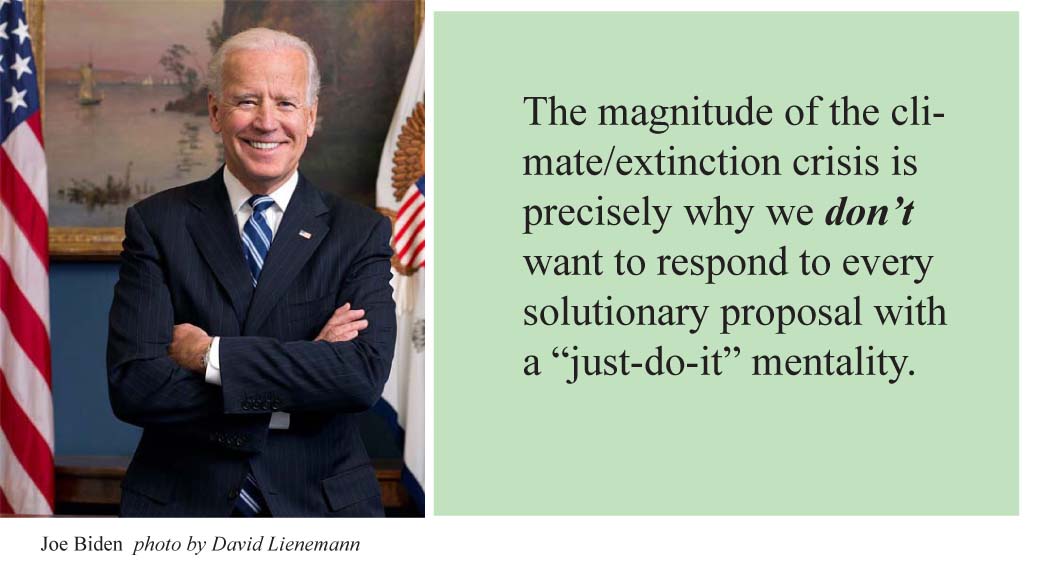
Yes, I am worried that I will come off, in writing this, as not seeing our world’s climate/environmental problems as “big enough” to warrant drastic action, so I tried to address this by saying the GNDs get the “urgency right.” The fact that the problem is huge and life-threatening–vastly bigger and more serious than the virus pandemic for instance–does not imply that we should do the first thing some industry-lobbyists and political-strategists say we should do. If you are a patient with a gangrenous right leg, it is imperative that you not go to a surgeon who will cut off your left leg. The urge to “just do it,” as one corporation dementedly keeps imploring us, is extremely dangerous.
AD:
In particular anything we do to help the biofuel/biomass industry is far worse than doing nothing at all.
The fact that biomass and biofuels are included anywhere in the list of clean or sustainable sources of energy in early drafts and descriptions of the Green New Deal is very troubling. It all stems from a mental error made originally by the large Environmental organizations who by and large decided to endorse ethanol back in the mid 2000-oughts when a consortium of agricultural corporations created a masterful campaign to have this hoax turned into federal law. At the time, many people did not understand what ethanol and ag-biodiesel would look like in practice. (Archer Daniels Midlands had no such lack of insight.) The insanely voracious land-requirements for ethanol were to alter land and commodity prices from that point on and the world over. The verdant prairies of eastern North Dakota were bulldozed immediately and the Dead Zone in the Gulf of Mexico made its appearance. When Timothy Searchinger wrote his seminal report debunking ethanol as, shockingly, worse than fossil fuel as a contributor to Greenhouse Gases (because of the destruction of the prairies and tropical forests as ag was pushed to expand) ( Linkneeded), a strange thing happened. The major environmental organizations mostly issued quiet statements rewriting their position on ethanol (although most continued to be deluded by next-generation “cellulosic” or “algae-based’ biofuel shell-game strategies). However, and very strangely, no one seemed to notice these recantations, and most journalists continued merrily along their way, obediently presenting biofuels as an unquestioned green option for producing energy that was in no need of debate or discussion.

“Biomass” is biofuel’s evil twin. It’s a Madison-Avenue name for what we used to call “burning wood.” The very notion that burning wood could be a solution to our climate problems should put people on alert: We might ask, Wow! Why did no one ever think of burning wood before? But please, can we look at the science? Mary S Booth has written a withering denunciation of biomass in the New York Review of Books that explains the scientific errors that were corruptly or dimwittedly made to sneak “biomass” into the hallowed hall of “sustainable” energy sources. Here is the link to The Great Biomass Boondoggle by Mary S. Booth
Another point on biofuel: While biofuels like ethanol and biodiesel, (favored in Europe) as well as biomass are worse for the planet and the climate than simply burning gasoline, they are wondrously magical in helping get politicians elected. They allow “environmentalists” to seek common ground with farmers, something all types of environmentalists always sorely wish for. They allow politicians to say they are helping farmers, which is very true but on one level is also very ironic—we love farmers only partly because they are salt-of-the-earth people. The rest of that strong love-bond stems from the fact that we get hungry every five hours and they are the ones that grow the food we eat by and large. But with ethanol, farmers aren’t putting food on our table, they are, in a market sense, taking food off the table. Ethanol uses an astounding 40% of our vast corn crop, taking about 40 million acres of America’s rich cropland to grow only 5 to 7 percent of the fuel we put in our cars and trucks. Thus it exerts an upward pressure not only on the land needed to be taken from Nature for agriculture, but also an upward pressure on food prices. Small changes in the price of basic grains can be devastating to the poor in places like Egypt and even India, where families regularly teeter on the brink of hunger and starvation—oh wait, the list of places with families like that now includes America.
(Biofuel-promoting websites dismiss the idea that ethanol raises food prices, but to back this up they usually point to secular trends, saying things like: “Corn prices went up initially with the RFS (Renewable Fuel Standard, the name of the key legislative requirement to include ethanol in gasoline) but have since dropped to pre-ethanol levels,” or words that more slickly present this type of argument. Clearly, these writers have never taken economics or have conveniently forgotten it. If the supply of land for food is reduced, the price will always be pushed up—but whether the resultant corn price is higher or lower than the status quo ante depends on many varied factors. The reality remains that whatever the corn price is with ethanol, it would be lower without it, assuming everything else remains unchanged.)
AD:
And while clean energy targets sound effective, in reality they often collide with the irrational way we incentivize electric utilities and don’t lead to real change.
One of the arguments at the root of this last section is made more eloquently than I will make it by______ at this link:
There are lots of signs that the methods favored by Green New Deal conceptualizers are going to be similar to those endorsed by the majority of climate activists so far in most legislative venues. This means we will see legislation that is about setting targets for climate gas reduction in the future and asking governments and particularly utilities to meet them. This doesn’t work.
If we set a target with a goal of 30% of our electricity to be sourced from renewable production, the utilities will be glad to enter into a deal to do this. They will embark upon large capital projects to create sustainable energy production, but they won’t care how efficient they will be because utilities in America are not rewarded for producing energy at the lowest cost, they are rewarded for their capital outlays. An inefficient project may well seem more attractive to them than an efficient one, since they are allowed charge their captive customer base rates that will set the return on capital invested at about 11%. Meanwhile, this approach will do nothing to dissuade a consumer from using fossil-fuel produced energy, as the price signal for electricity will remain basically unchanged.
Suppose we set a goal of 50% of our energy to come from renewables by 2030 and miraculously we meet that goal. It won’t mean we’ve reduced greenhouse-gas pollution. Since the climate crisis began, at least three brand new uses for cheap energy have emerged: crypto-currencies, indoor Marajuana grow-operations and the plain old cost of the internet. 5G will be the next big suck. It’s quite possible that 50% of the 2030 demand for energy will represent more climate pollution than 100% of the 2020 demand.
But if these approaches don’t work, what do I think should be done?
The only possible way to sell a real plan to the public, which to this day remains largely unmoved by the gravity of the crisis (I’m talking about both Dems and Repubs) would be to invent a revenue-neutral plan that did not grow the public-sector and did return the carbon-tax money money that was collected back to the public. And the carbon tax would best be enacted over a large area to thwart avoidance behavior.
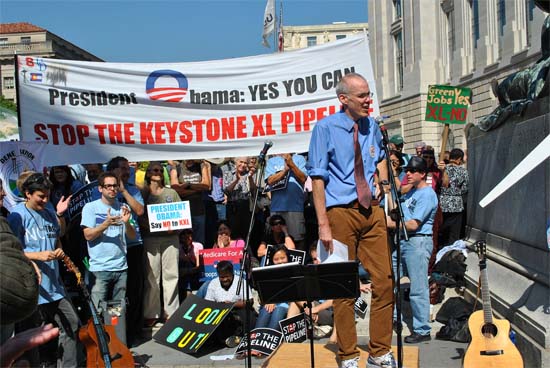
Another step that would help fight climate change and might actually be acceptable to the voting public would be to zero out subsidies for climate-polluters. The first such subsidy would be the RFS for ethanol and freebies for biomass. Another would be the unconstitutional granting of eminent domain power for pipeline companies. Unconstitutional because the Kingly power of eminent domain is reserved in the Constitution only for projects involving public use. A Canadian Company owns Keystone XL and if anyone thinks this pipeline is for “public use” they are free to stand outside the company’s headquarters and wait for their dividend check.
It gets into the weeds really fast, but there are also massive subsidies for fossil fuel companies written into the tax code. I personally do not know or understand these exactly and am not the person write this paragraph, but all these gifts could be jettisoned if we had the will we would find the way.
Another really theoretically beautiful way to slow climate change, because it is fully market-friendly approach, is to begin to levy fees and taxes on fossil fuel that is transhipped across jurisdictions. If I want to mail a package with flammable liquid at the Post Office, I will be sent away forthwith. But if I am an oil-shipment company I can send highly flammable bitumen through Seattle, right by the Mariners stadium, in long strings of rail cars. I will be charged $10 a ton by the State of Washington. If this fee were to be raised commensurate with the external costs imposed on society by the material being shipped it would create the type of feedback loop that would allow capitalistic forces to shut down climate pollution without any especial pain being inflicted on the economy. It would be the beginning of the creation of a VIRTUOUS CIRCLE.
A Virtuous Circle would work this way. Let’s say Climate change causes more fires to burn, which causes governments to need more money to help victims, organize controlled burns, and help owners fire-proof buildings. Government then proposes to raise taxes to pay for these new programs.
1 A Virtuous Circle is created if the tax is on climate pollution.
2.. A Vicious Circle or Non-Circle is created if the extra money is raised from other sources such as sales tax, property tax or general business taxation.
Florida is already starting to go under water. The private insurers have long ago pulled out of coastal Florida, which is an example of Capitalism working to solve it’s own problems. Sadly, the government of Florida has stepped in to insure building owners and new construction in coastal Florida not funded by climate-pollution taxes. Thus in Florida, government has stepped in to create a vicious circle and make our problem worse. The plight of Florida home and business owners will soon be brought to the national taxpayers and we will be asked to bail them out. Unless the Economic Quotient of the voting public is raised, we will probably do this by creating another vicious circle.
Florida was an example, fires were an example, rail-shipping of oil-cars is an example, but if we create virtuous circles, and refuse to REPAIR THE DAMAGE OF CLIMATE CHANGE WITH ONLY NON-CARBON TAX REVENUE, we can create VIRTUOUS CIRCLES that allow capitalist forces to work with us in stopping this scourge to our planet.
Is anyone still reading?
Thank you.
Comments are welcome. I would love to open up a comment section, but the internet is what it is, full of mean people and bots and opportunists along with you and the other wonderful people.
So all I can do is leave my email, ednewbold1@yahoo.com
.I would love to hear from you.
Thanks,
Ed Newbold Wildlife Artist

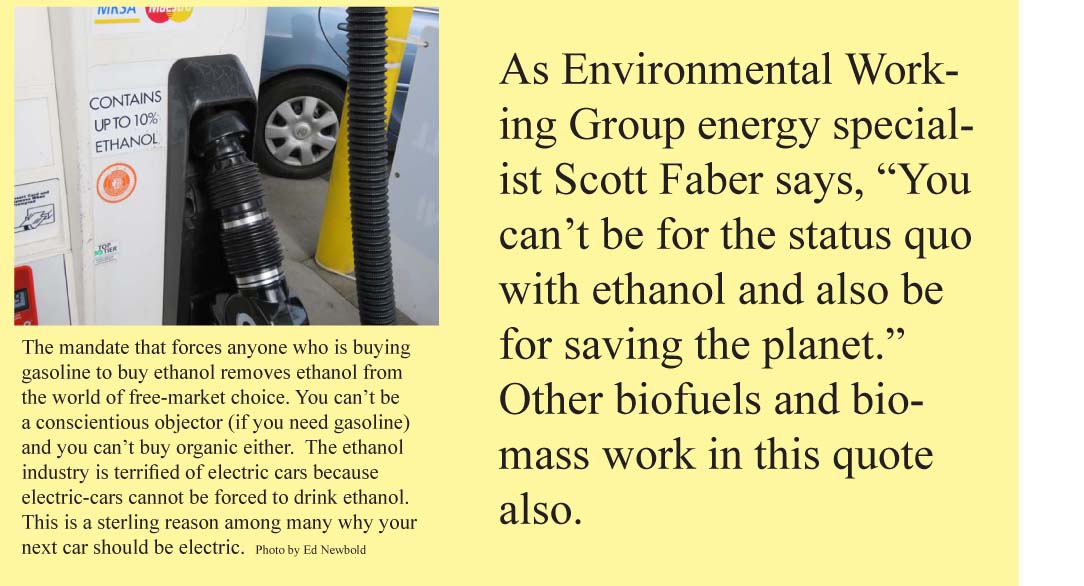
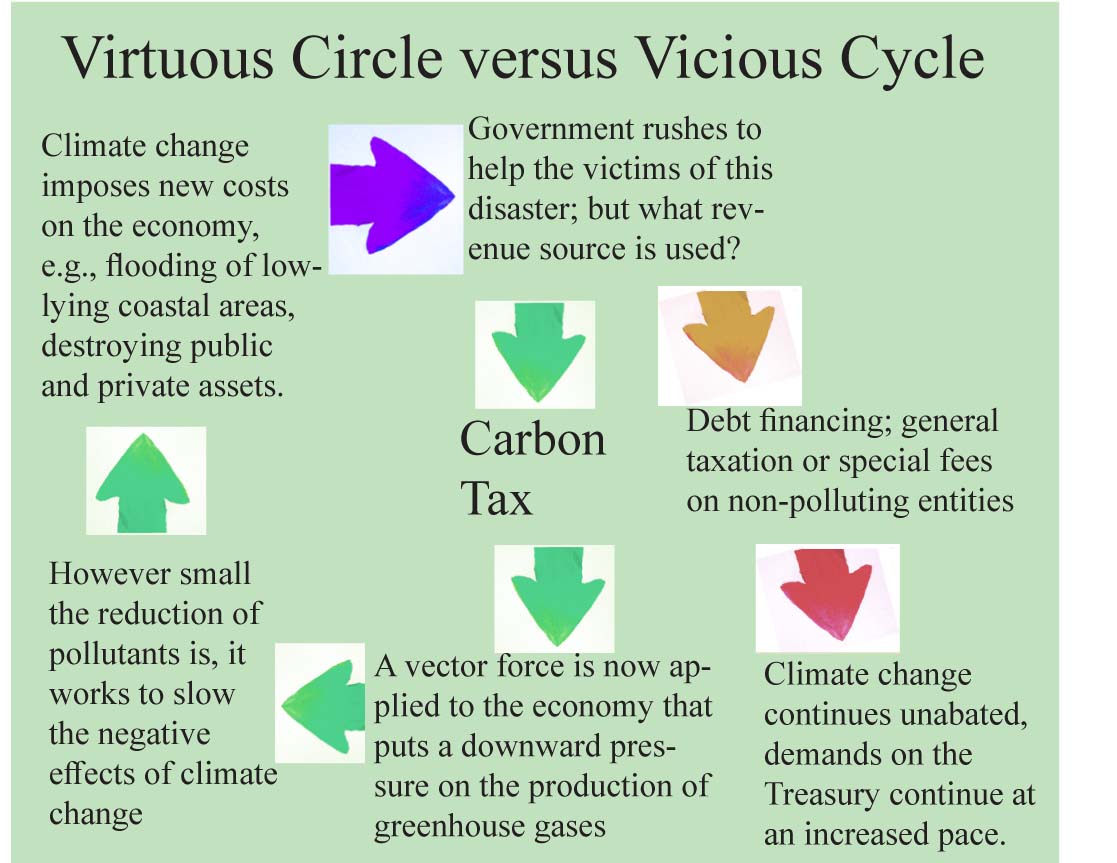
Sorry, the comment form is closed at this time.